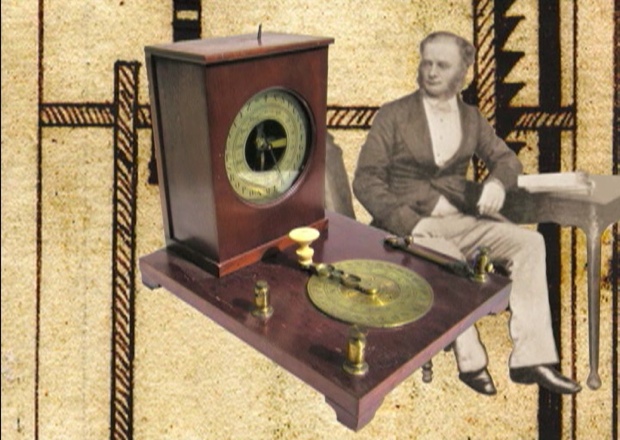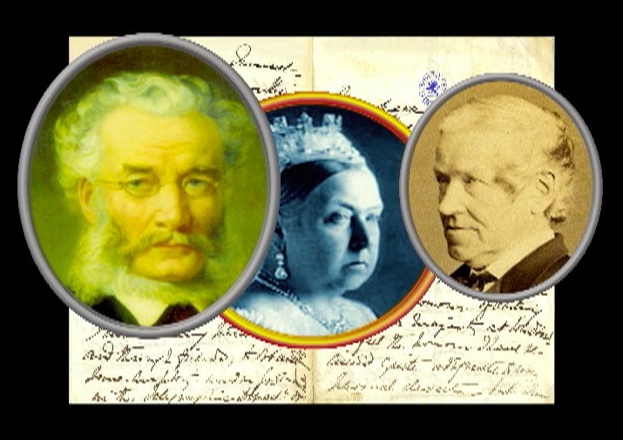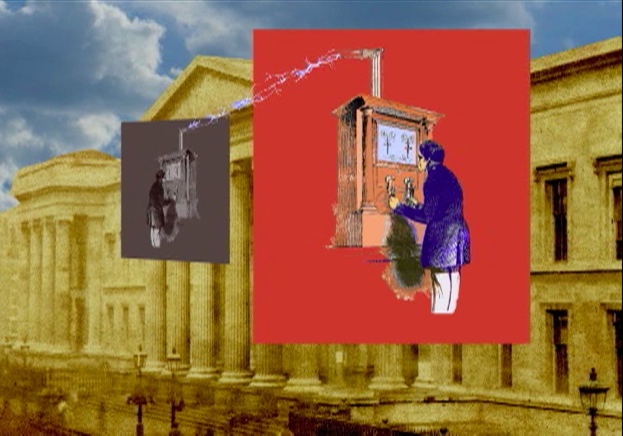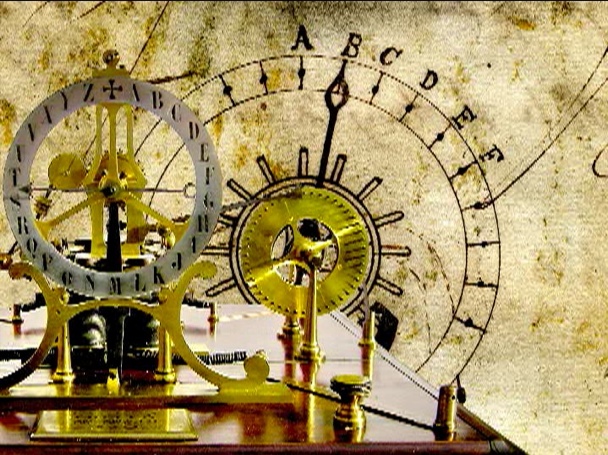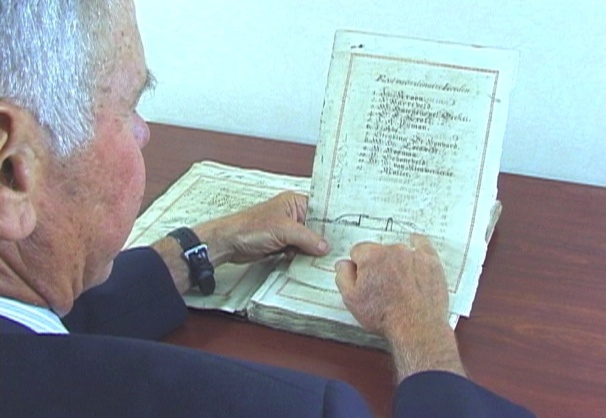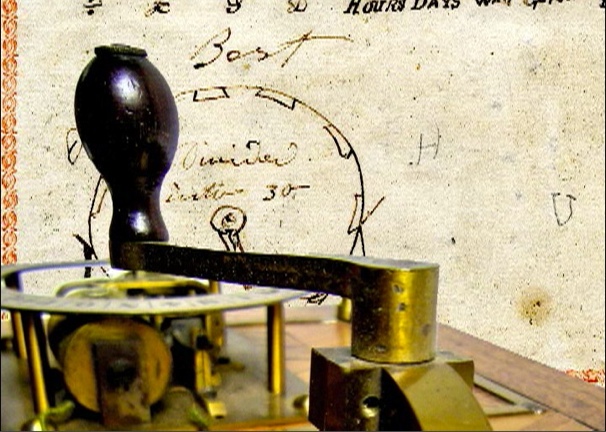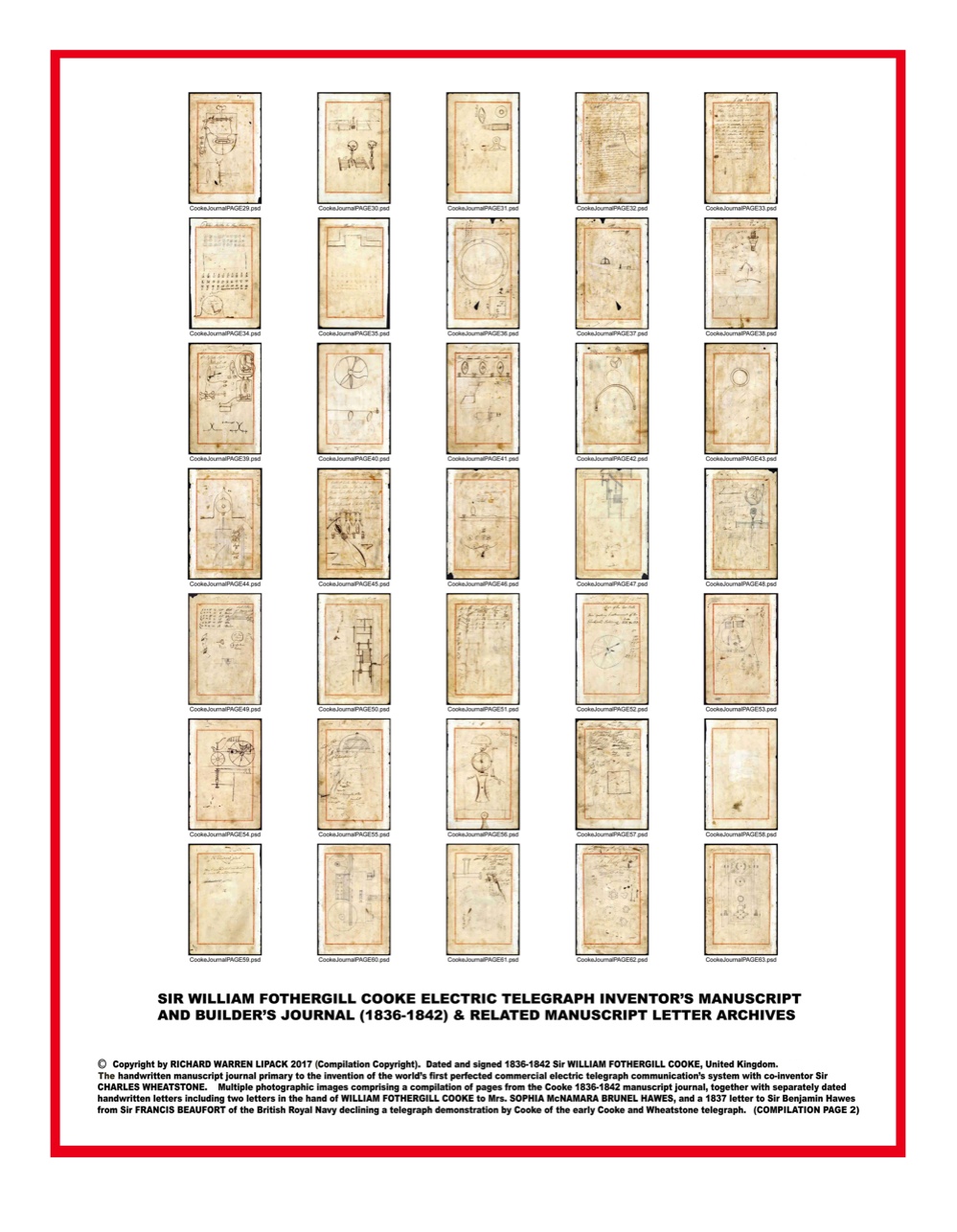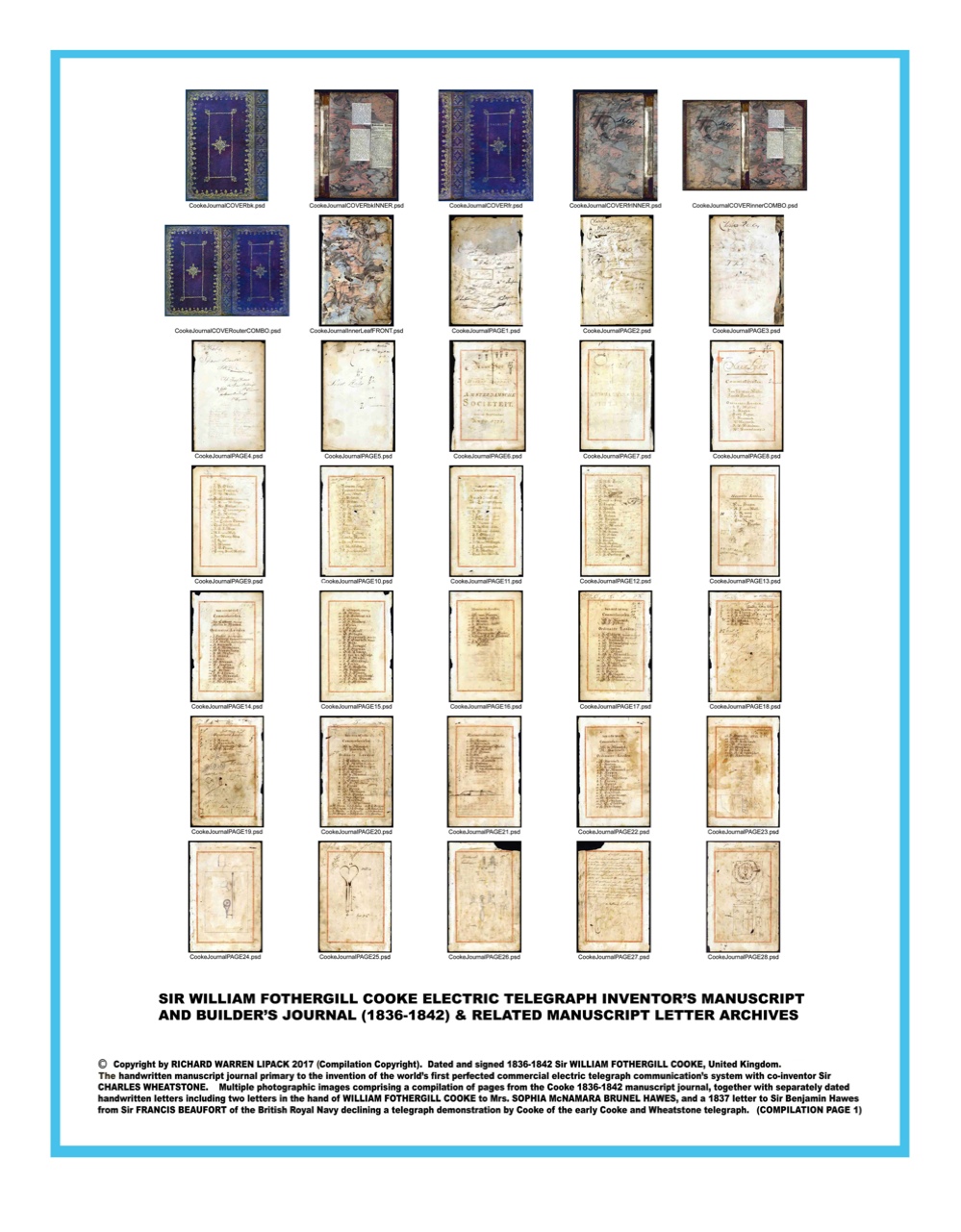
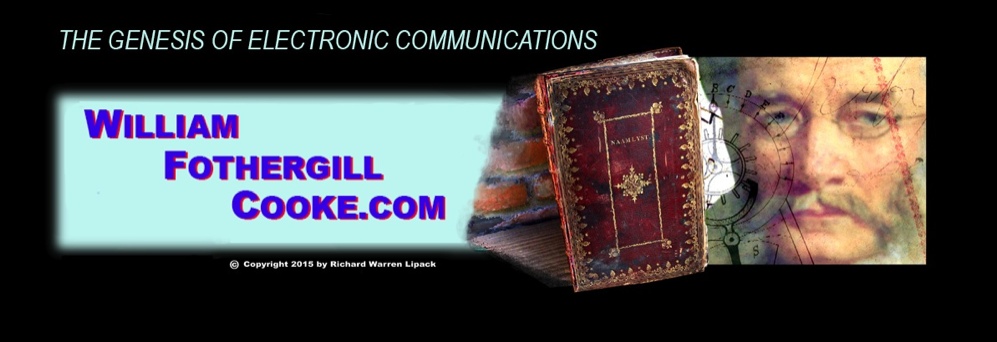
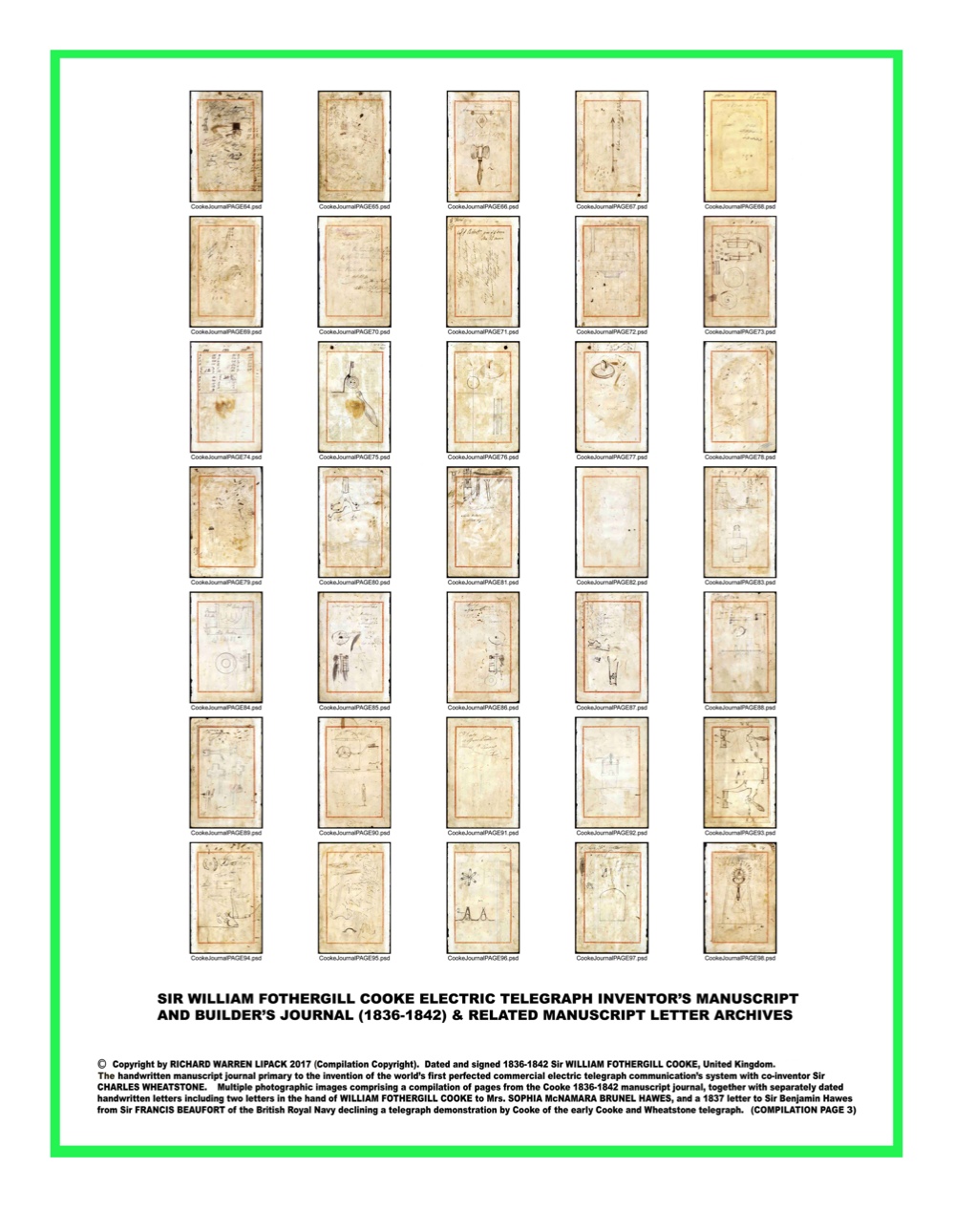
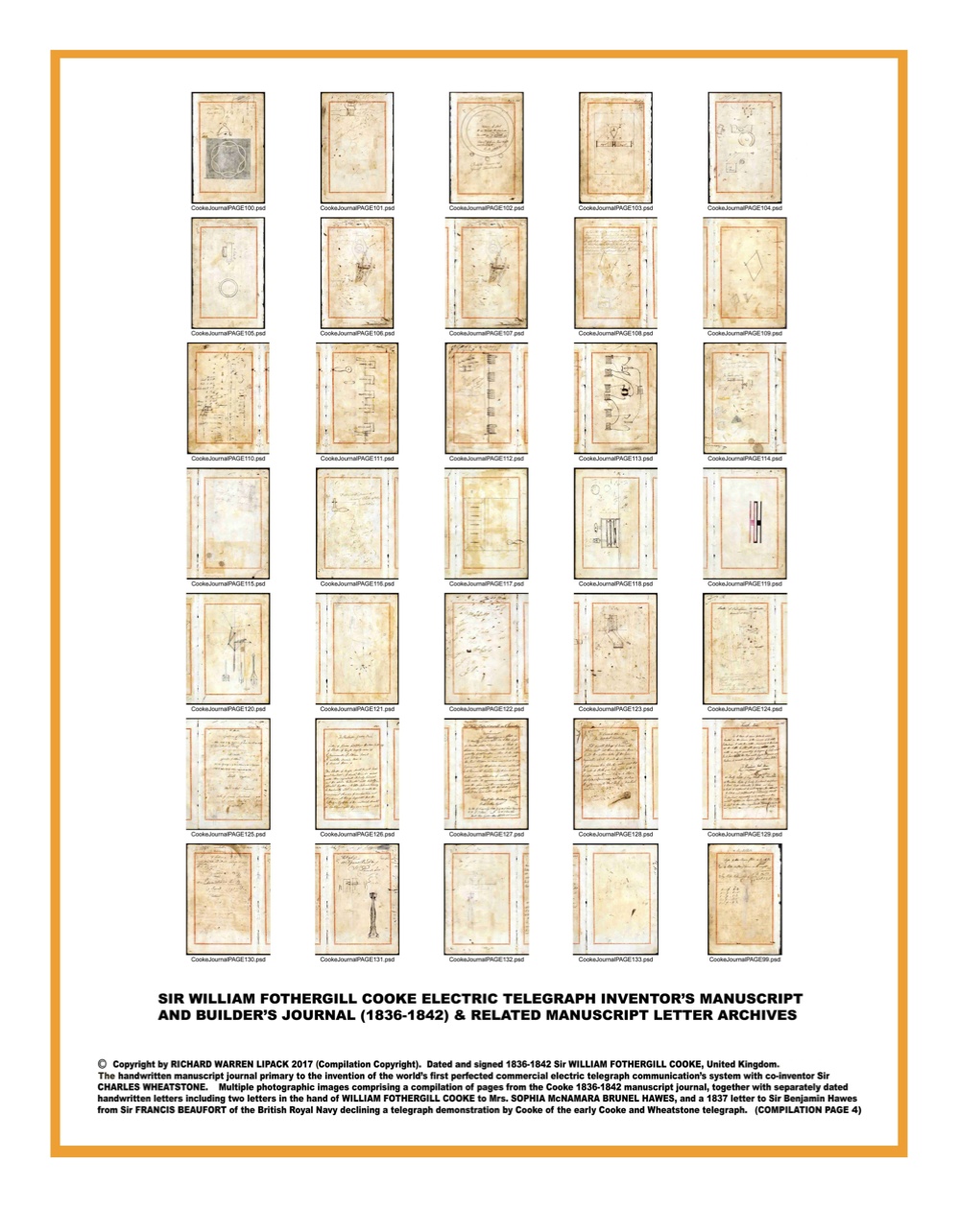
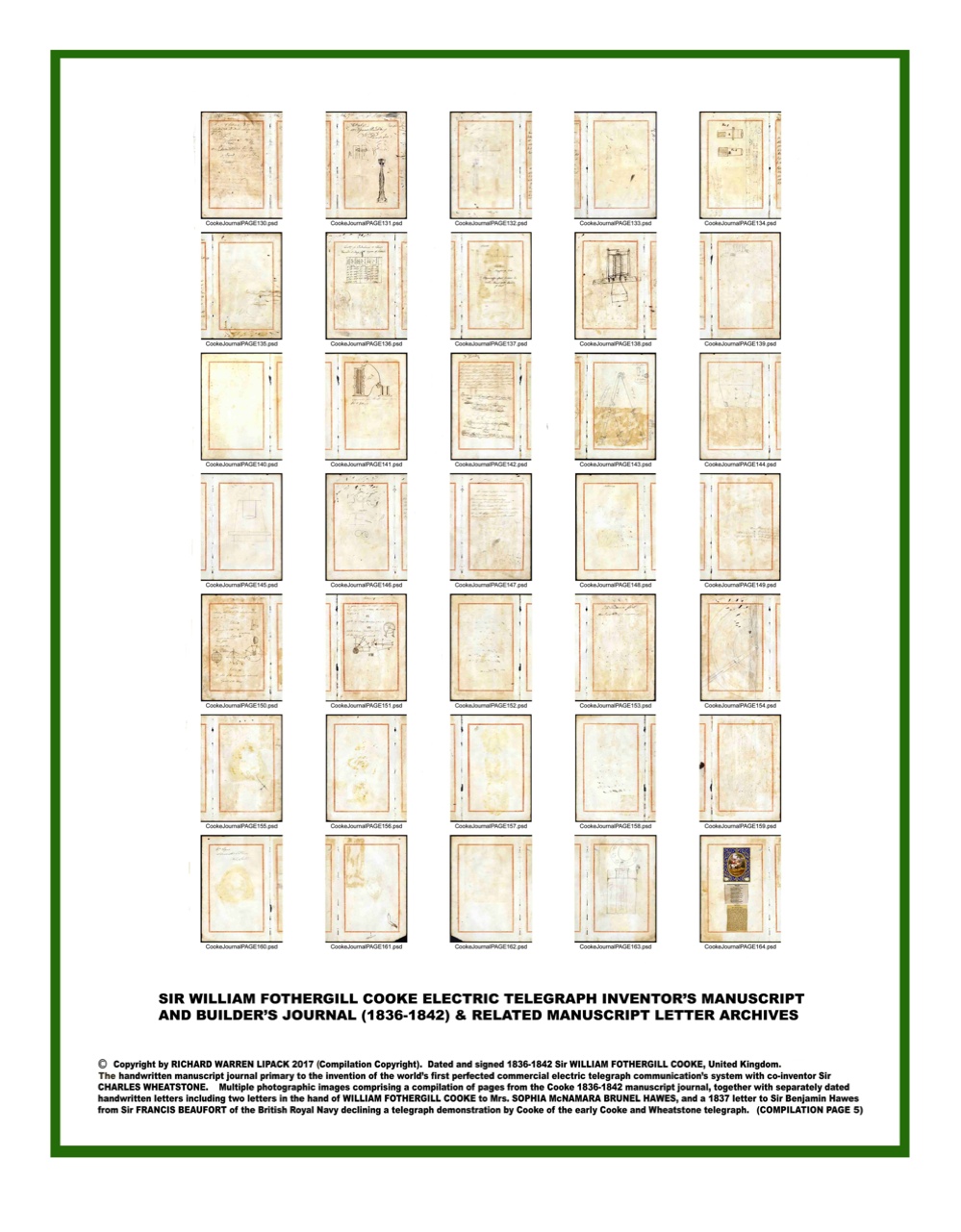
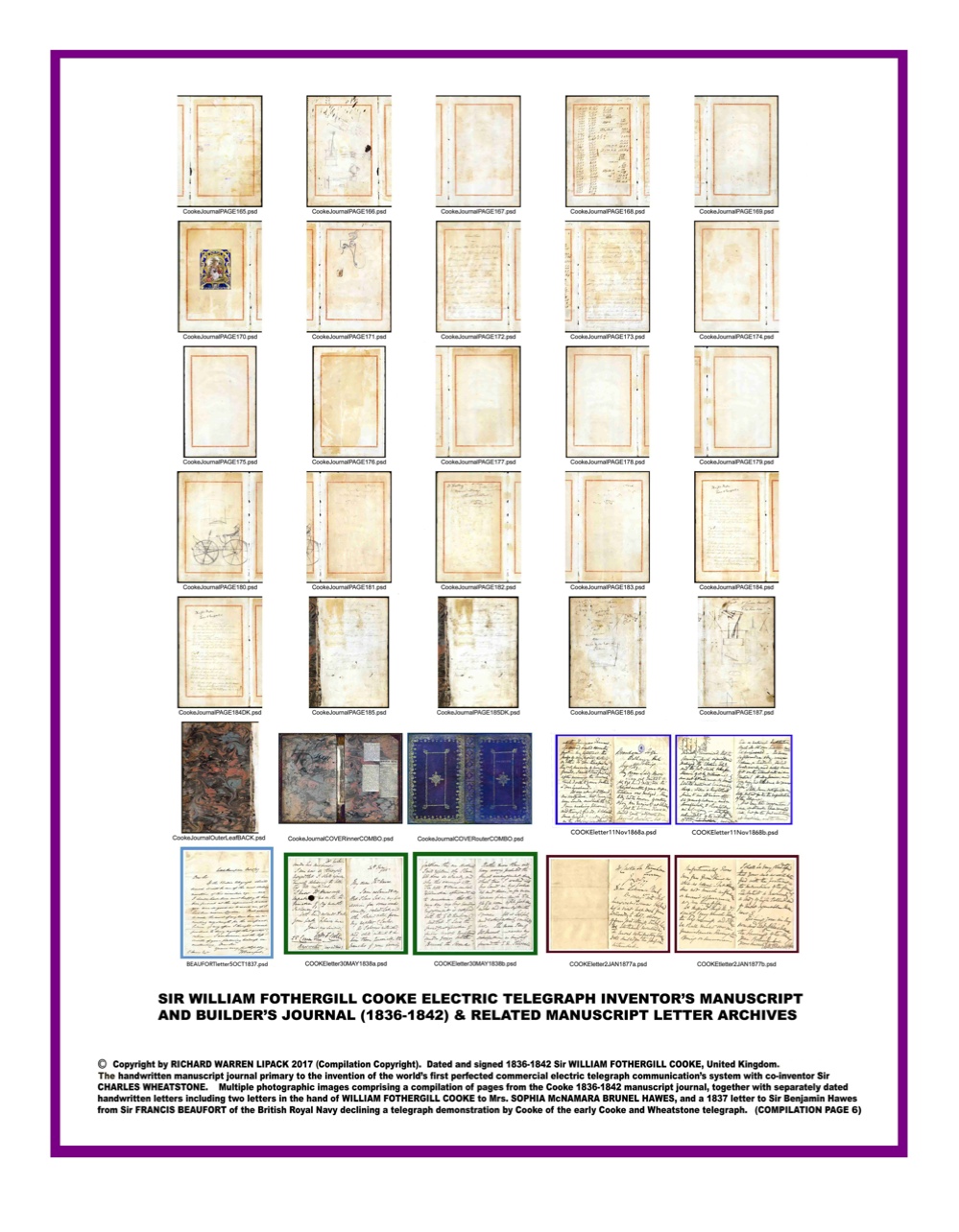
The only extant manuscript journal of English inventor William Fothergill Cooke was discovered in America in the late 1990's by international historian Richard Warren Lipack. The contents primarily consist of builder's drawings executed for the production of the initial telegraph apparatus designed by Cooke for his partnership with Professor Charles Wheatstone of King's College, London. The Cooke and Wheatstone partnership was established by the two in 1836 to develop a commercially viable electric telegraph communications system. The first dated entry by Cooke in his journal dates to 30 November 1836.
For almost two centuries now, all historians writing histories on the development of the telegraph tend to propagate a story that minimalizes Cooke's contribution to the Cooke and Wheatstone partnership all while primarily emphasizing Wheatstone's contributions as manifold.
But if one seeks out and examines all of the document holdings found in the Charles Wheatstone archives held by King's College, London - very little documents executed by Wheatstone exist treating the development of the Cooke and Wheatstone telegraph. And what does exist in the Charles Wheatstone King's College archive does not treat the design characteristics of the Cooke and Wheatstone telegraph system, but rather only the scientific basis and theory that made the apparatus and system work. Wheatstone was the one behind scientific theory, while Cooke was the actual person behind the implementation and design of the actual system and telegraph apparatus that became the Cooke and Wheatstone commercial electric telegraph.
However, outside of the professionally executed patent draftsman produced patent drawings that were submitted to the British patent office for the Cooke and Wheatstone telegraph patents, no actual drawings supporting the designs utilized in the Cooke and Wheatstone telegraphs by Cooke himself have ever been found: until the late 1990's.
William Fothergill Cooke was essentially written out of history. All of this actually began from the time Cooke and Wheatstone perfected and finalized their telegraph and system in 1840, with the Blackwall Railway telegraph installation that coincided with Isambard Kingdon Brunel's Blackwall Railway service inauguration in July of that year. Shortly after this installation, Cooke initiated legal arbitration proceedings against Wheatstone which lasted over a year.
William Fothergill Cooke initiated these proceedings in an effort to gain equal public notoriety for his contribution to the Cooke and Wheatstone telegraph. What prompted Cooke to challenge Wheatstone by starting up a legal arbitration hearing over his contribution to the Cooke and Wheatsone partnership, was that he was finding published announcements, advertisements and acknowledgements that only mentioned Wheatstone's name and not Cooke's.
At the end of the arbitration hearings, equal credit was given to both the Cooke and Wheatatone name and such was proceeded with publicly.
Most significantly, the key witness in the Cooke and Wheatstone arbitration was a young man by the name Frederick Kerby. It was Frederick Kerby who was the primary machinist for Cooke and Wheatstone, and it was Frederick Kerby who worked closely with Cooke in producing the Cooke and Wheatstone telegraph from its very beginning. Most pages found in the manuscript journal of William Fothergill Cooke's bear the name "Frederick Kerby" or "Kerby" written in ink by Cooke.
When the Cooke journal was first discovered by historian Richard Warren Lipack in the late 1990's, and for over a decade past its discovery, it was believed that Frederick Kerby was the journal's author. This was because the Kerby name was found on most of the pages. This was in spite of the fact that about a half dozen or so signatures of Cooke's appeared on the pages, plus that of one by Charles Wheatstone.
The problem was that the Science Museum at London and other institutional resources failed to provde high resolution images of letters and documents bearing Cooke's handwriting and signature available publicly for use by independant historians to properly conduct comparative analysis of the handwriting and alleged Cooke signatures found the Cooke journal.
It was not until the year 2010 that letters bearing Cooke's signature could be found open market and secured by historian Lipack to conduct a proper evaluation utilizing a process of comparative analysis known as paleography. The letters that were found signed by Cooke became what are known as "exemplars." These exemplars made it possible for the positive authentication of the Cooke signatures and handwriting found within the Cooke journal: As conclusively being that of William Fothergill Cooke's and not penned by Frederick Kerby.
What is most interesting, is that aside from being the primary machinist for the Cooke and Wheatstone partnership and also the primary witness for Cooke in the Cooke and Wheatstone arbitration of 1840-1841, it was Frederick Kerby who actually brought the Cooke journal to America in late 1842 - and eventually to Canada, before bringing it with him when he came back to the United States shortly after the American Civil War in the 1860's. This is how the Cooke manuscript journal on the invention and perfection of commercial telegraphy came to be found in the United States; where it was discovered!
Illustrated below are thumb nail sized photographs of all of the pages found in the Cooke journal along with the covers insde and out. Also the exemplar letters used in authenticating same are also shown below. These documents shine a light on the massive effort Cooke made towards the development of the first perfected commercial telegraph system in the world - which finally proves that the Cooke and Wheatstone telegraph was primarily founded on Cooke' expertise and not Wheatstone's scientific presentments.
Access to all of these pages and documents will be made available for college professors and teachers, scholars and students in high resolution form at for detailed study on a paid subscription basis here at WilliamFothergillCooke.com.
Compilation Section 1
Compilation Section 2
Compilation Section 3
Compilation Section 4
Compilation Section 5
Compilation Section 6
THE MANUSCRIPT JOURNAL AND EXEMPLAR LETTERS OF
WILLIAM FOTHERGILL COOKE

